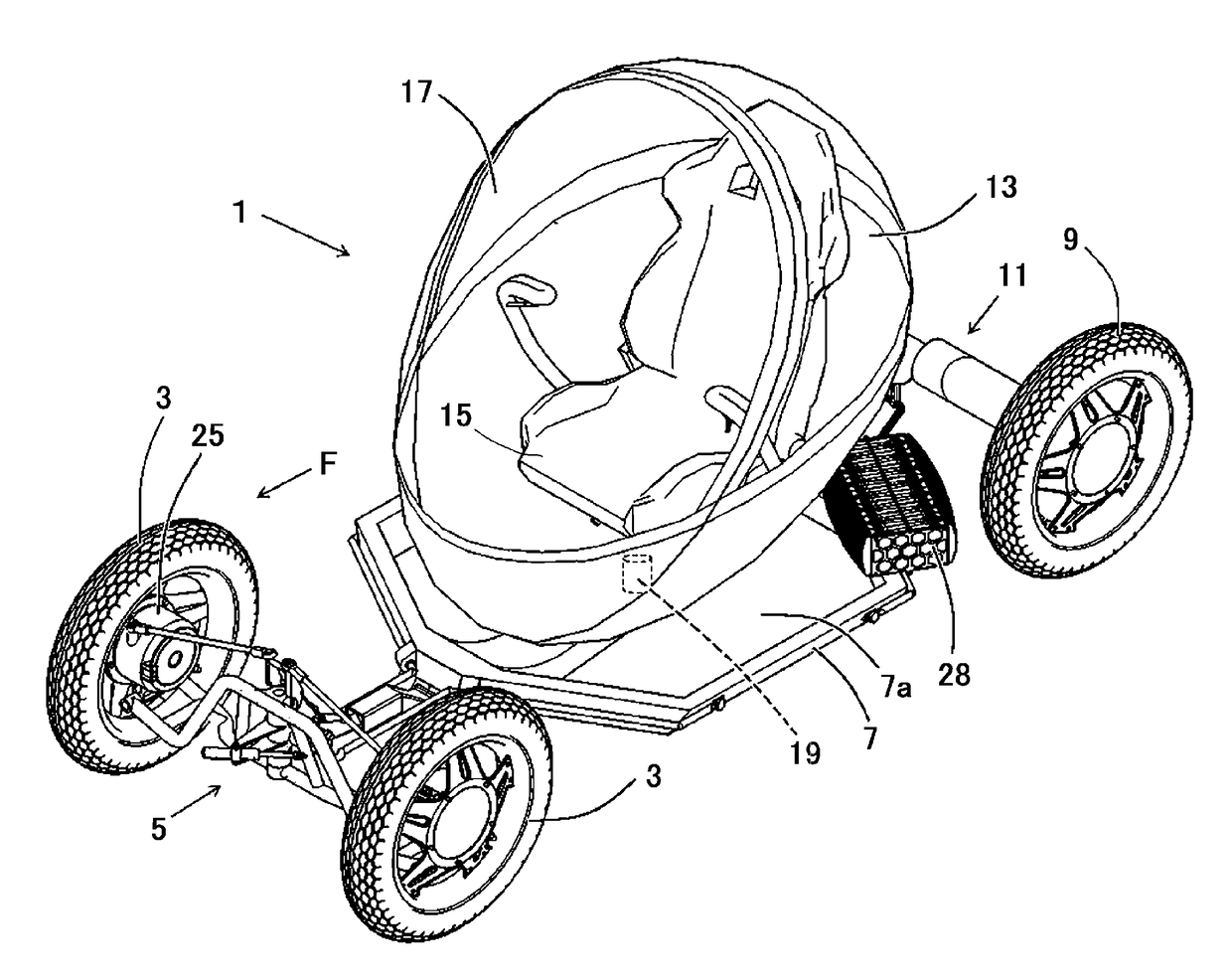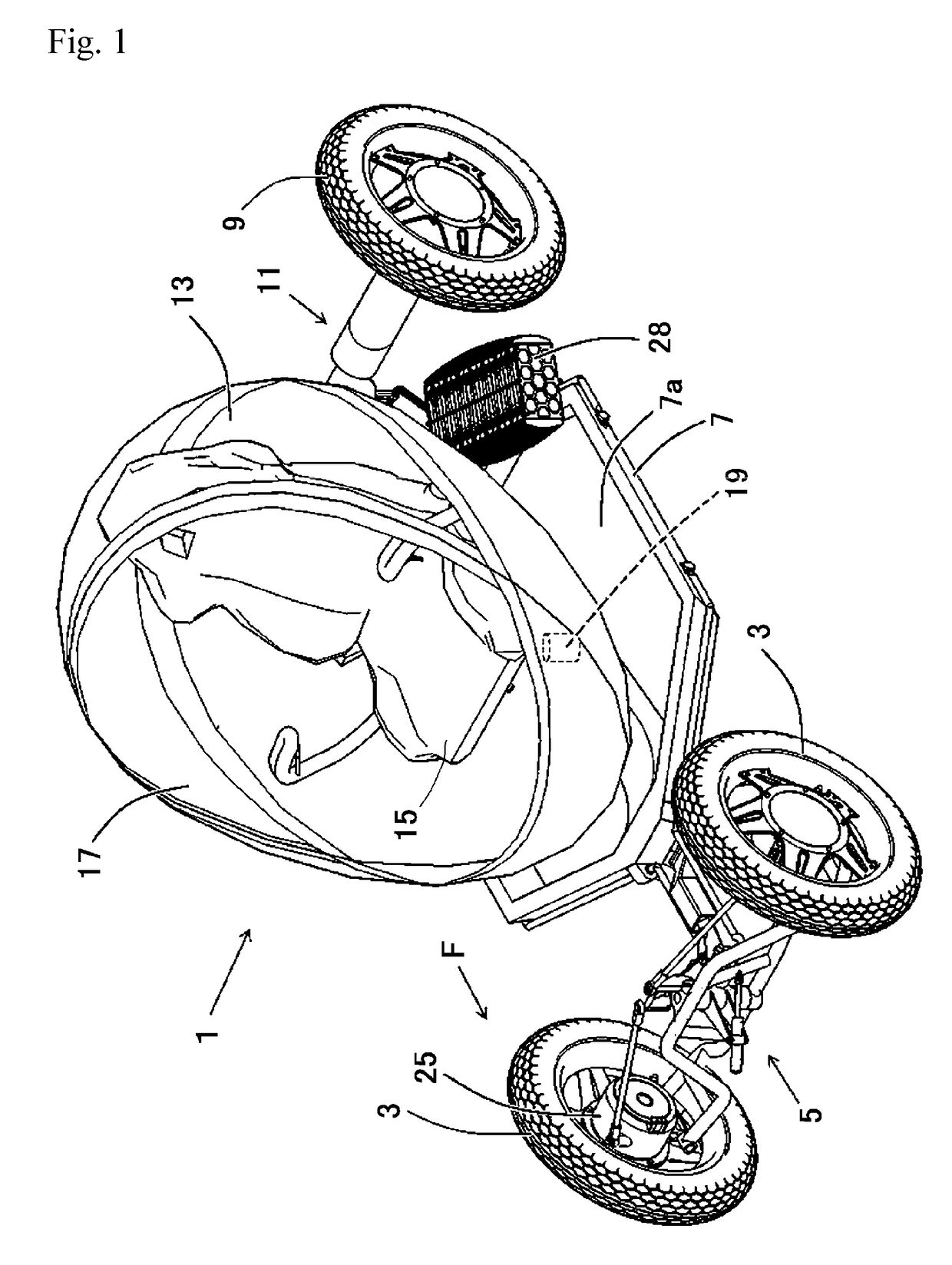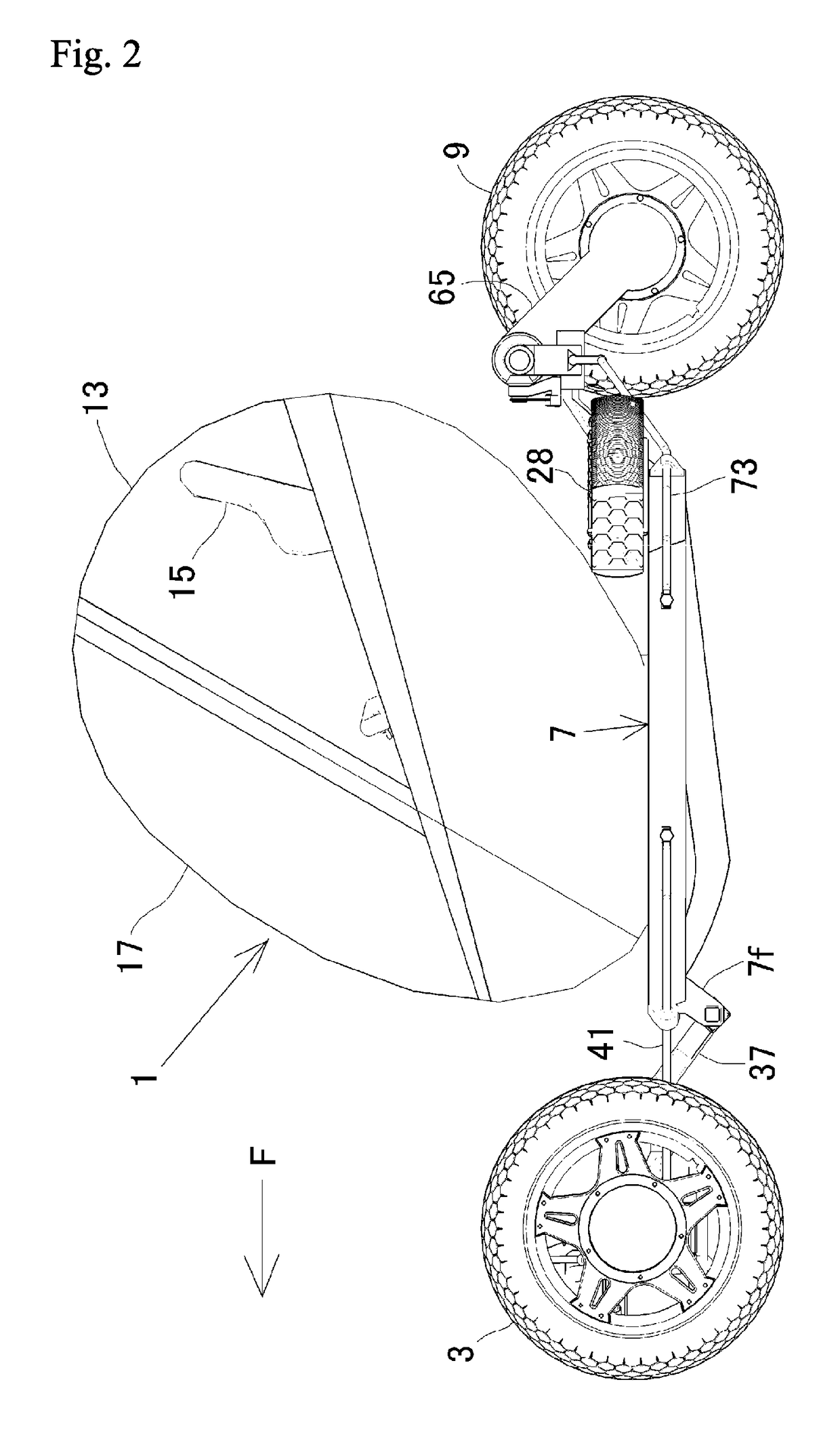Vehicle
a technology for vehicles and rear wheels, applied in the field of vehicles, can solve the problems of the difference in the driving force between the left and the right rear wheels, and achieve the effects of preventing the support member of the wheel, facilitating the operation of each wheel, and facilitating the movement of the wheel
- Summary
- Abstract
- Description
- Claims
- Application Information
AI Technical Summary
Benefits of technology
Problems solved by technology
Method used
Image
Examples
first modification embodiment
[0244]The previous Embodiment illustrates an example in which an occupant on the vehicle 1 operates the brake operator 21 and the acceleration operator 22 installed on the steering yoke 20 and manually drives the vehicle 1. However, like the first Modification Embodiment as illustrated in FIGS. 26 to 30, the automatic driving mode in which neither the steering yoke 20, the brake operator 21, nor the acceleration operator 22 of the vehicle 1 is manipulated may be optionally switched to and from the above manual driving mode.
[0245]In this Modification Embodiment, the vehicle 1 carries various on-vehicle devices including: a switching unit 130 for switching between the manual driving mode and the automatic driving mode; an imaging unit 131 for imaging the traveling direction of the vehicle 1; a map information storage unit 133 for storing road map information; a travel route control unit 135 for guiding the vehicle through a travel route to a destination after the destination has been ...
second modification embodiment
[0268]The previous Embodiment and the first Modification Embodiment illustrate an example configuration in which the pair of left and right wheel holding members (65 and 65) are interlocked to one another and moved vertically in opposite directions while the intermediate bevel gear 87 is engaged with the pair of main bevel gears (83 and 83). However, in the second Modification Embodiment shown in FIG. 31, it is possible that the pair of left and right wheel holding members (65 and 65) are interlocked to one another and moved vertically in opposite directions by means of a link mechanism.
[0269]In this Modification Embodiment, one end portion of a link member 119 is pivotally connected using a first universal joint 117 to a longitudinal intermediate portion of the wheel holding member 65. The other end portion of the link member 119 is pivotally connected via a second universal joint 121 to an end portion of a V-shaped rocking arm 123. A center portion of the V-shaped rocking arm 123 ...
third modification embodiment
[0272]The previous Embodiment and the first Modification Embodiment illustrate an example configuration in which by changing the length of the electric actuator 57, the front-to-rear tilt angle of the virtual straight line Lf along the axis of the steering shaft member 51 is altered. In the third Modification Embodiment shown in FIG. 32, the vehicle height on the front wheel 3 side of the vehicle 1 may be shifted during acceleration and deceleration, the shift depending on whether the vehicle 1 is under a running state or a stopped state. This may be used to alter the front-to-rear tilt angle of the virtual straight line Lf.
[0273]In this Modification Embodiment, a front end portion of a long arm part 631b is attached to a longitudinal intermediate and rear portion of the first center support member main body 631a, which corresponds to the first center support member main body 31a according to the previous Embodiment. The first center support member main body 631a and the arm part 63...
PUM
 Login to View More
Login to View More Abstract
Description
Claims
Application Information
 Login to View More
Login to View More - R&D
- Intellectual Property
- Life Sciences
- Materials
- Tech Scout
- Unparalleled Data Quality
- Higher Quality Content
- 60% Fewer Hallucinations
Browse by: Latest US Patents, China's latest patents, Technical Efficacy Thesaurus, Application Domain, Technology Topic, Popular Technical Reports.
© 2025 PatSnap. All rights reserved.Legal|Privacy policy|Modern Slavery Act Transparency Statement|Sitemap|About US| Contact US: help@patsnap.com



